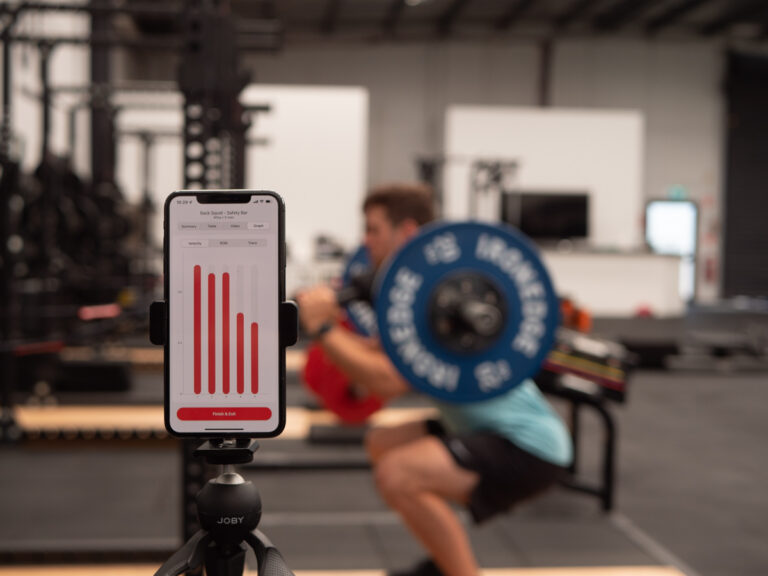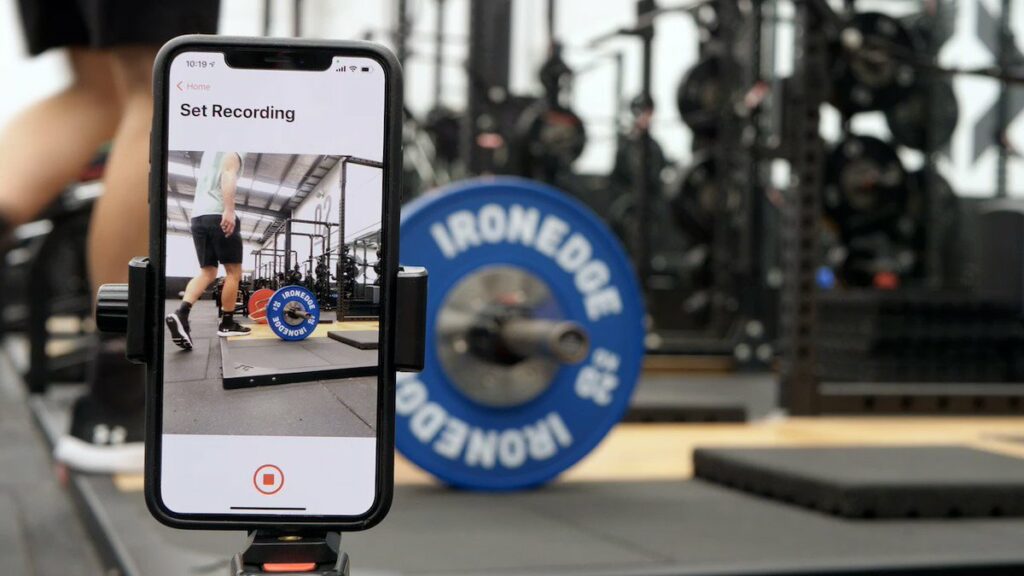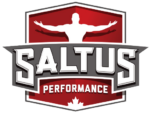
Technology in the weight room is far from a new thing. The ability to test verticals or cleans and everything in between has been around for some time. However, the advent of Velocity-Based Training (VBT) has taken the application of technology to new heights.
Traditionally, 1 rep max’s was primarily used to test progress and measure performance. Athletes and coaches would rely on percentages of a maximum lift to determine training loads. However, VBT has shifted the paradigm by utilising real-time data from barbell velocity as a tool to formulate advanced training plans.
This blog delves into the principles of VBT, exploring its positive impacts on strength and conditioning while also highlighting potential drawbacks.
Velocity-Based Training involves measuring the speed or velocity of a barbell during strength exercises such as cleans, squats, bench presses, and deadlifts. Specialised devices, such as linear position transducers or wearable sensors, accurately capture the velocity data. This data provides coaches and athletes with valuable insights into the quality of each repetition and allows for more precise programming and individualisation.
Positive Impacts of Velocity-Based Training:
- Auto-regulation and Individualisation: VBT empowers coaches and athletes to individualise training loads and intensities based on real-time feedback. By monitoring barbell velocity, they can adjust loads to optimise performance and minimise the risk of overtraining or injury. Athletes can focus on reaching specific velocity zones, ensuring optimal power output and neuromuscular activation.
- Enhanced Strength and Power Development: VBT allows for the optimisation of strength and power gains by prescribing loads based on an individual’s relative strength. This personalised approach maximises the benefits of training and helps athletes break through plateaus. VBT also enables the identification of weaknesses or imbalances, facilitating targeted interventions.
- Objective Performance Feedback: Velocity data provides objective feedback, helping athletes and coaches track progress accurately. By monitoring velocity trends over time, it becomes possible to identify performance improvements or potential regressions. This data-driven approach enhances motivation and facilitates evidence-based decision-making.
- Neuromuscular Adaptations: VBT promotes specific neuromuscular adaptations, such as improved rate of force development, by targeting the speed of movement. By prescribing loads that optimise velocity, athletes can enhance their explosiveness and ability to produce force rapidly, translating into improved athletic performance.
Challenges and Drawbacks:
- Cost and Accessibility: Implementing VBT requires specialised equipment, which can be costly, limiting its availability to certain individuals or organisations. Moreover, technology can be prone to errors or require frequent calibration, requiring ongoing maintenance and expertise.
- Learning Curve and Interpretation: Effectively utilising VBT demands a solid understanding of the technology and its interpretation. Coaches and athletes must familiarise themselves with velocity-based metrics and understand the optimal ranges for different exercises and individuals. A lack of knowledge may lead to misinterpretation and inappropriate training prescription.
- Potential Over-reliance: While VBT provides valuable feedback, there is a risk of over-reliance on velocity data. It is crucial to maintain a holistic approach to training, considering other key factors like technique, range of motion, and individual differences. VBT should be used as a tool within a broader framework of strength and conditioning principles.

Velocity-Based Training has emerged as a game-changer in the field of strength and conditioning. Its ability to provide real-time feedback, facilitate individualised programming, and enhance performance has made it increasingly popular among athletes and coaches. By optimising training loads and promoting specific neuromuscular adaptations, VBT offers significant benefits in terms of strength and power development. However, challenges like cost, accessibility, and the need for proper interpretation remind us that VBT should be used judiciously, complementing a comprehensive strength training program
If you have any questions or need assistance with your training preparations, do not hesitate to contact us at [email protected] or call us at 778-788-5438.
